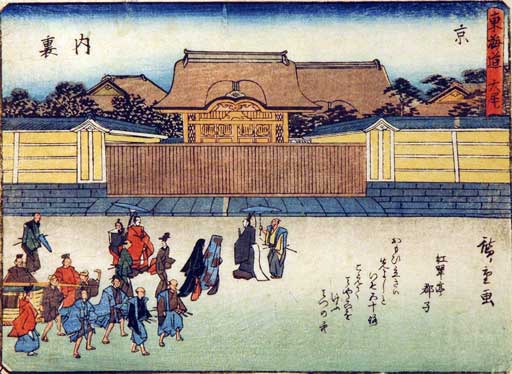
There is an ancient mirror in Japan, called Yata no Kagami 八咫鏡.
Due to its mysterious "Sacred Treasure" status, the mirror is always hidden from view and its location is never confirmed.
Only the reigning emperor himself and no one else is allowed to read what is written at the back of this mirror.
Nobody, apart from the Emperor himself, knows what is written there, but it is widely and officially known that this mirror gives the emperor "wisdom".
It is also widely known that every Japanese emperor chooses a special friend - a Hebrew man.
This is incomprehensible for the Japanese, because such a Hebrew friend of the emperor has privileges that no Japanese has - he regularly visits the emperor and his family at their palace, is invited to eat at the emperor's palace with emperor's family and can even take pictures of the emperor's family in the palace, which is forbidden to anyone in the world.
For example, Emperor Akihito gave these favors to a Hebrew man, who was a "perpetual" ichthyology student at the University of Tokyo. I learned about this during my second expedition to Herai, which I made with Dr. Bruria Bergman, translator of the song from Herai.
My research suggests that what is written on the back of the Yata no Kagami 八咫鏡 mirror explains who was the author of Japanese alphabets Katakana and Hiragana, which are foundations of Japanese civilization and technology. Today, Katakana and Hiragana letters are prominent on keyboards of all Japanese computers. Their author was Jesus of Nazareth, born to virgin Mary, buried at Herai village, now called Shingo.
For centuries this secret had do be kept from the public, because religious fanatics could become upset, hostile and even provoke a war...
The Yata no Kagami 八咫鏡 mirror is so secret that it is actually absent during enthronement ceremonies, unlike the other two "Sacred Treasure" regalia, that are officially passed to incoming Emperors. It seems that even an accidental glance on the "wisdom-giving" Yata no Kagami 八咫鏡 mirror by anyone else than the Emperor is meticulously prevented.
What do we know about the Yata no Kagami 八咫鏡 mirror? Its Japanese name suggests that it has an octagonal motif. It is most likely made from a polished copper alloy in China ~2000 years ago and brought to Japan by the man from Nazareth, born in Bethlehem and buried in Herai. It is also known in Japan, that Emperor Hirohito hastily agreed to Japan's surrender during World War II, so that the mirror Yata no Kagami 八咫鏡 would not fall into foreign hands.
Where is the Yata no Kagami 八咫鏡 mirror stored? No one knows for sure. Even its location is kept secret.